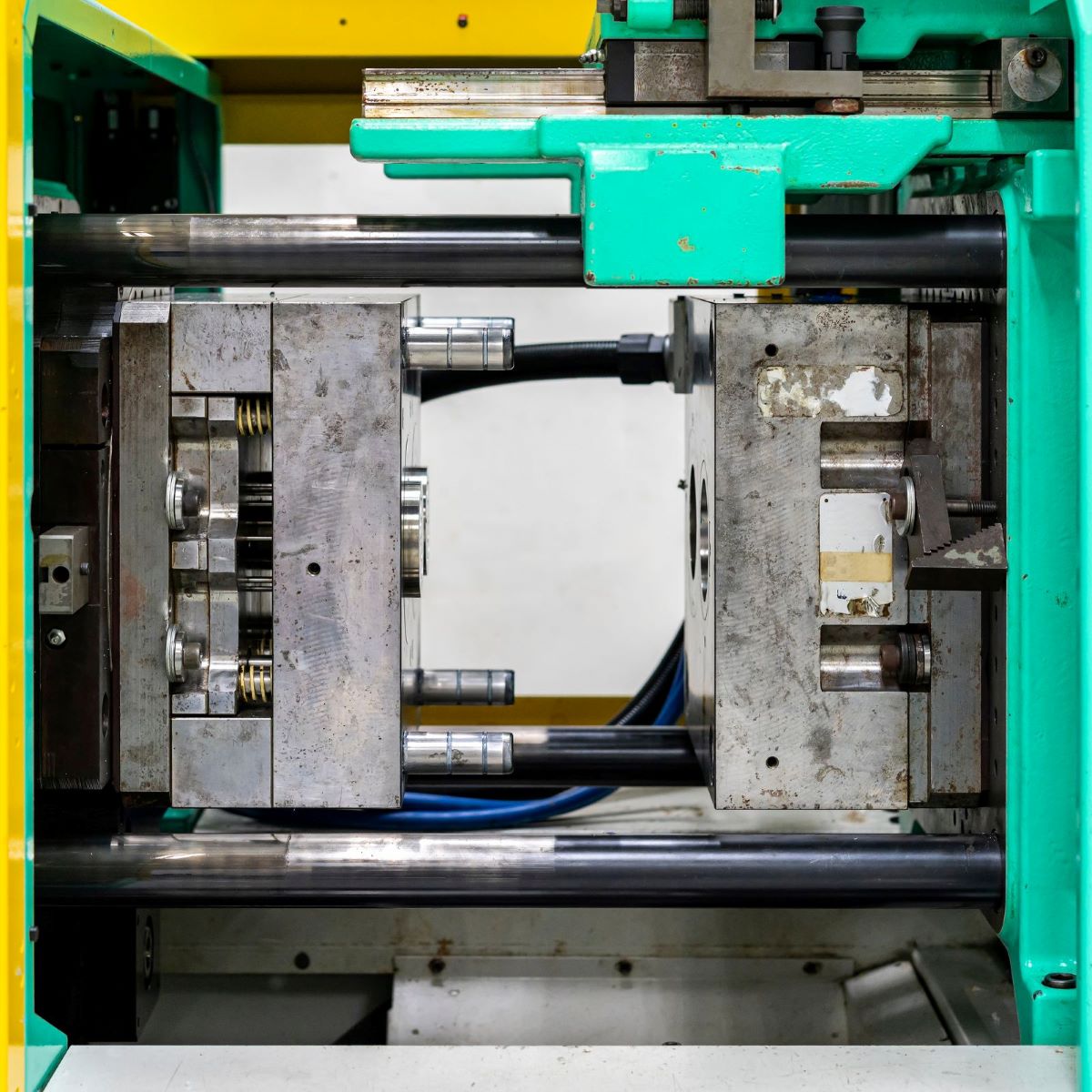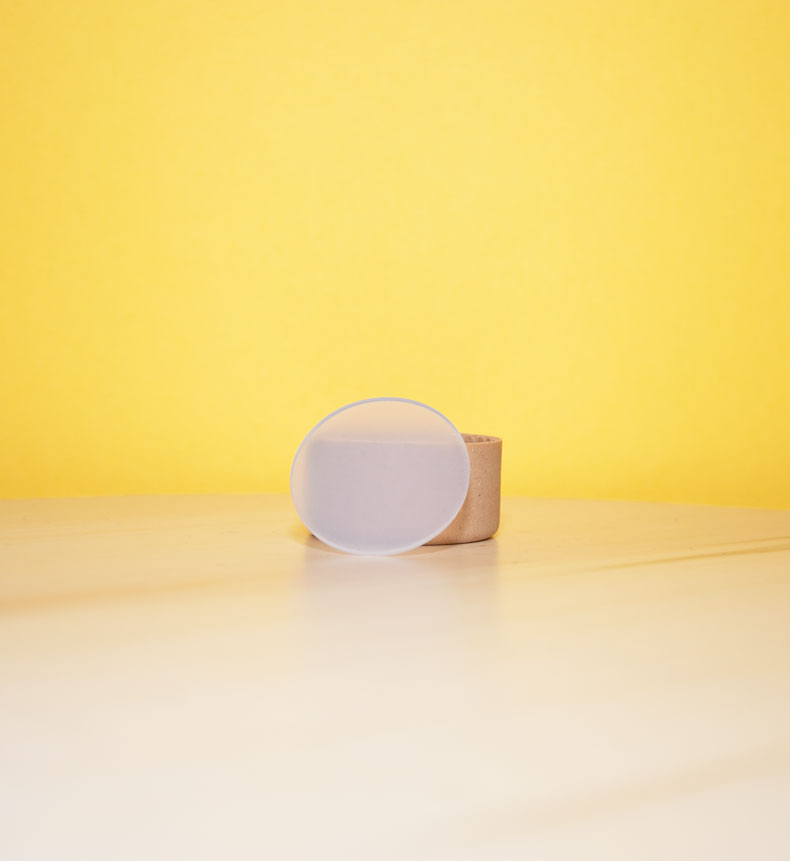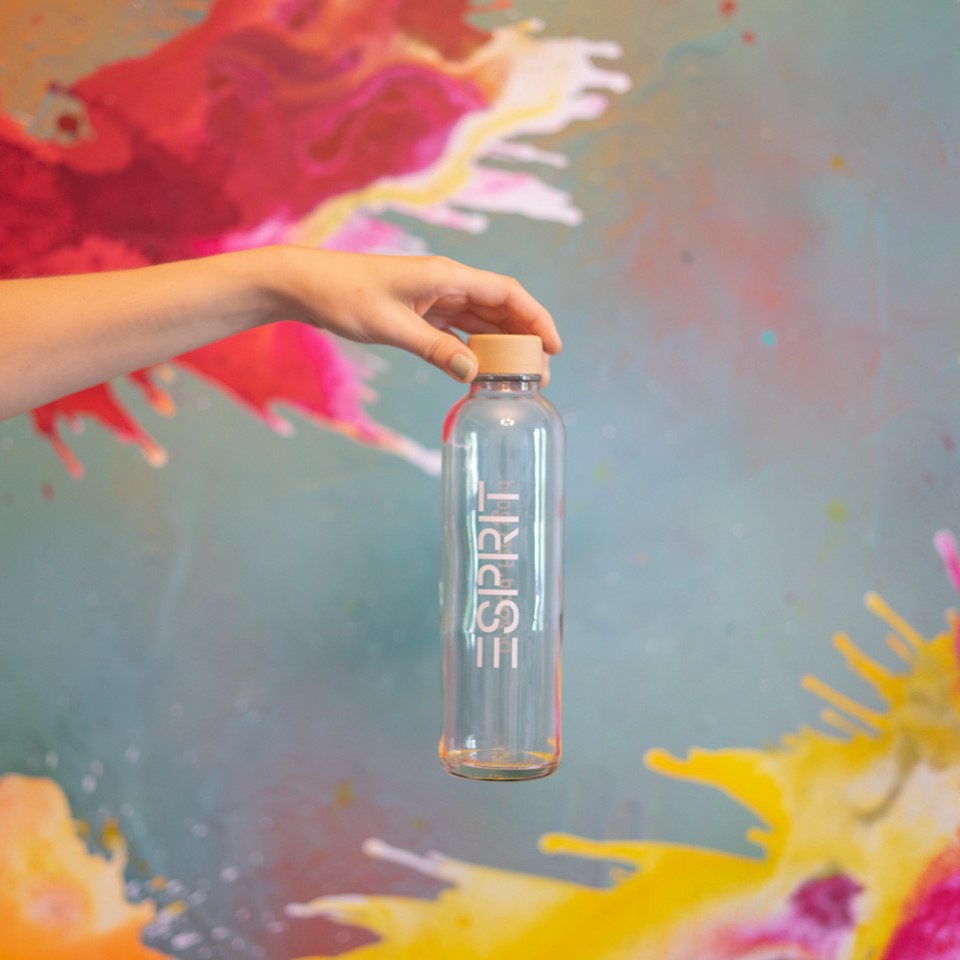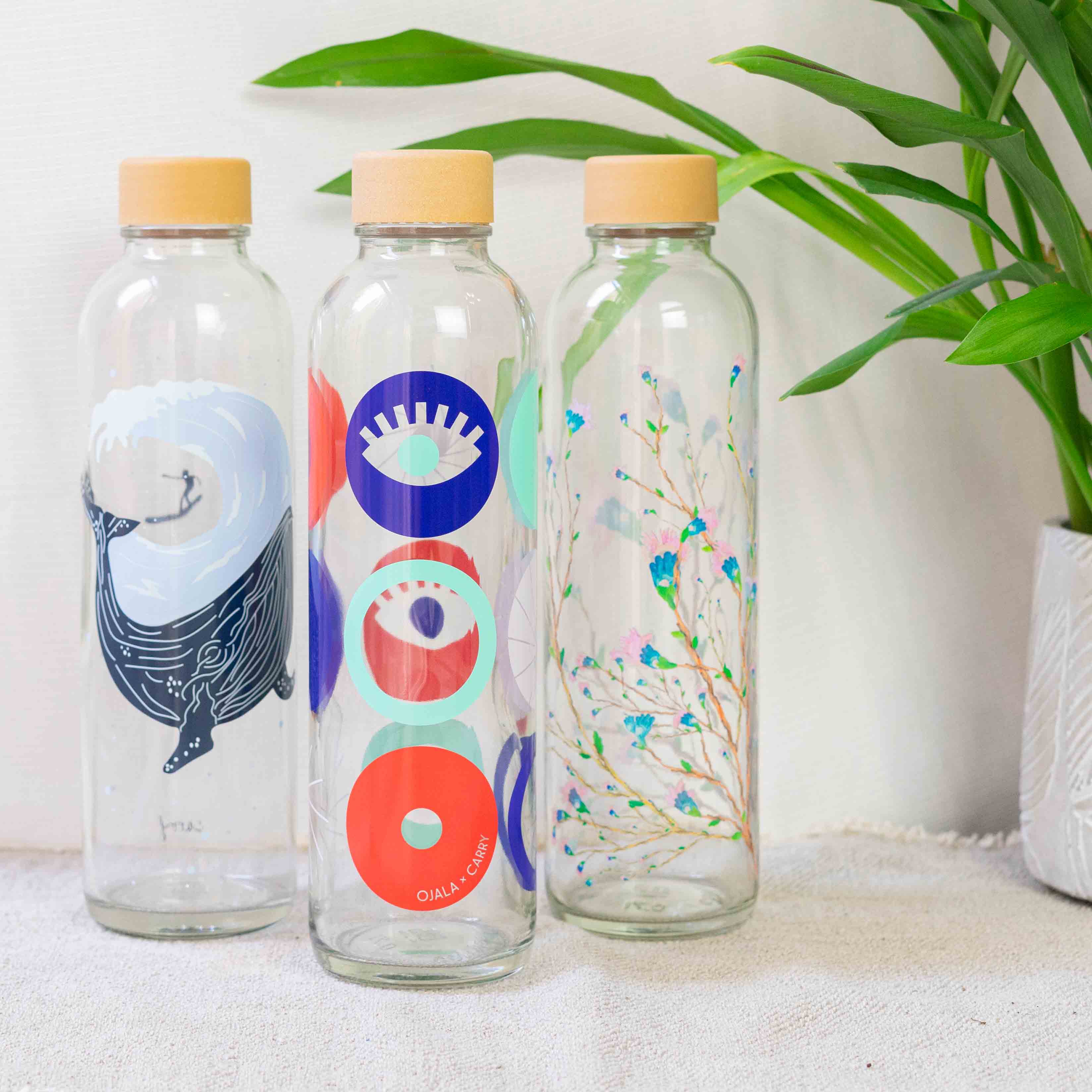Drinking bottle
Protective cover
Drinking glass
Bottle brush
Closure
From the wood fibre to the lid
How is the screw cap made?
The closure for our CARRY Bottles combines sustainability with absolute functionality 😊 We aim to produce long-lasting, well-thought-out and practical products, so taste neutrality, dishwasher suitability and carbonation suitability were basic requirements for our lid.
The closure is a natural product and is made from pollutant-free polypropylene (PP) and FSC-certified upcycled wood fibers. It is produced by our partner in Hesse and you are welcome to take a closer look at the production process! If you have any questions, ideas or feedback, then feel free to contact us .

We use 25% wood fibers for our closure. The wood fibers are a waste product from paper production that would otherwise have no further use and are therefore upcycled for our lids.
The wood fibers are FSC-certified, come from regional tree stocks and for every tree felled, 2-3 new trees are planted.

At the compounder, the wood fibers are mixed with PP (polypropylene). The PP is mostly made of petroleum-based PP and has a slightly smaller proportion of bio-based PP.
The mixture is used to produce a granulate, which is then passed on to our partner for lid production.

Our partner, a medium-sized family business in Hesse, melts the granulate and processes it into our screw caps using an injection molding process. The liquid material is injected into our lid mold, creating the small injection point in the middle of the top of the lid.
Did you know that we use a specially designed lid shape with a special thread to ensure leak-proofness?

We've all experienced a bottle leaking in our backpack. That's really annoying and shouldn't happen with our CARRYs! That's why we put an elastic sealing disc made of non-toxic silicone in our screw cap - this is of course also produced in Germany.
For optimal cleaning by hand or in the dishwasher, you can remove the sealing disc. But don't forget to put it back in the lid after cleaning ;)

Your CARRY Bottle with cap and sealing disc will hopefully give you joy for a long time and encourage you to drink water regularly 😊 Remember to clean your lid regularly and let it dry from time to time.
If you ever lose your lid or sealing disc, you can easily order a replacement part. And if you no longer have any use for the lid, you can dispose of it in the general waste.
We use 25% wood fibers for our closure. The wood fibers are a waste product from paper production that would otherwise have no further use and are therefore upcycled for our lids.
The wood fibers are FSC-certified, come from regional tree stocks and for every tree felled, 2-3 new trees are planted.
At the compounder, the wood fibers are mixed with PP (polypropylene). The PP is mostly made of petroleum-based PP and has a slightly smaller proportion of bio-based PP.
The mixture is used to produce a granulate, which is then passed on to our partner for lid production.
Our partner, a medium-sized family business in Hesse, melts the granulate and processes it into our screw caps using an injection molding process. The liquid material is injected into our lid mold, creating the small injection point in the middle of the top of the lid.
Did you know that we use a specially designed lid shape with a special thread to ensure leak-proofness?
We've all experienced a bottle leaking in our backpack. That's really annoying and shouldn't happen with our CARRYs! That's why we put an elastic sealing disc made of non-toxic silicone in our screw cap - this is of course also produced in Germany.
For optimal cleaning by hand or in the dishwasher, you can remove the sealing disc. But don't forget to put it back in the lid after cleaning ;)
Your CARRY Bottle with cap and sealing disc will hopefully give you joy for a long time and encourage you to drink water regularly 😊 Remember to clean your lid regularly and let it dry from time to time.
If you ever lose your lid or sealing disc, you can easily order a replacement part. And if you no longer have any use for the lid, you can dispose of it in the general waste.





From material tests to the functional lid
Why did we choose our lid material?
Deciding on a lid material was by no means easy, as there are an incredible number of different materials with very different sustainability standards and functionalities. The most important criteria for us when choosing materials are sustainability (place of production, origin of raw materials, re/upcycling, availability of product information, certificates), aesthetics (color, structure, feel, how easy the material is to process) and functionality (suitability for food, smell, taste, leak-proofness, heat tolerance, dishwasher suitability).
We have carried out tests with many different materials and with our material made of PP and wood fibres we have found a material that meets many of our criteria, fits the CARRY incredibly well and with which we are very satisfied.
Why don’t we use a 100% bio-based lid?
Or to put it another way, why isn't our lid plastic-free? Making a lid out of a completely bio-based material sounds like a great idea - unfortunately, it's not that easy to implement. Many drinking bottles have a bamboo lid, but these always hide another material inside as a thread and as a contact point between the bamboo and the drink. The reason for this is that bamboo lids (and other purely bio-based lids) would not be water-resistant and hygienic in the long term.
So we want to do better and have deliberately chosen a lid with plastic content - this gives our lid additional functionality :)
Water & heat resistant
The plastic content makes the CARRY closure super functional! It is durable and robust, can withstand contact with water and hot drinks and is even dishwasher safe!
Odourless
Did you know that smells have a big influence on our sense of taste? We want you to really enjoy your drink from the CARRY! That's why it's particularly important to us that our lid has almost no smell of its own. We've achieved this by using plastic in the lid. In comparison, many bio-based lids (and some pure plastic lids) have a very strong smell of their own.
No competition for food
Another point that speaks strongly against many bio-based plastics for us is the origin of the raw materials. Bio-based plastics are made from starch or oil, which is usually obtained from food-grade plants. This means that the production of bio-based plastics is in direct competition with food production. We don't want that! With our closure made of PP and upcycled wood fibers, we are sure that this is not the case.
Why should the lid be disposed of in the residual waste?
We recommend that you dispose of your CARRY cap in the residual waste if it is broken or if you no longer have any use for it. We do not recommend disposal in the yellow bin, although the cap could theoretically be recycled with the right recycling facilities - unfortunately, these are not yet available across the board in Germany.
Important: You can dispose of a CARRY Bottle in the normal waste glass container for white glass!
Recycling in Germany
Currently, the recycling of plastics in Germany is only possible to a very limited extent - only a few plastics, such as PET, are recycled across the board. For many other plastics, the right sorting, separation and recycling technologies are still lacking. Therefore, a CARRY closure, no matter what material it is made of, cannot currently be reliably recycled in the public system.
Separation of different plastics
Theoretically, our closure could be recycled - if the material was identified as PP with wood fiber and collected and processed with similar materials. Since there are many different types of plastic and composites of several plastics, it is unfortunately not possible to separate them using current technology.






